The GPD Win 3 is a full-fledged PC that can fit into the palms of your hands as if it was a portable game console. It seeks to bring that handheld experience over to us PC Gamers, and after three iterations, the tech inside of it is now strong enough to deliver on that promise. Depending on the model you buy, you’ll find either an I5-1135G7 or I7-1165G7 Intel processor within. Both feature Intel’s Iris Xe igpu, which can outperform a dedicated MX350 graphics card. Your main difference between the I5 and I7 chipsets will be the added 16 Execution Units for the integrated graphics. It will go from 80EU with the I5 to 96EU if you get the pricier model. Both are more than capable, yet with most games, your limiting factor will be the iGPU. Those added 16EU to your igpu’s horsepower are very much worthwhile, more so if you don’t plan on buying another handheld PC any time soon and want to get everything you can out of it.
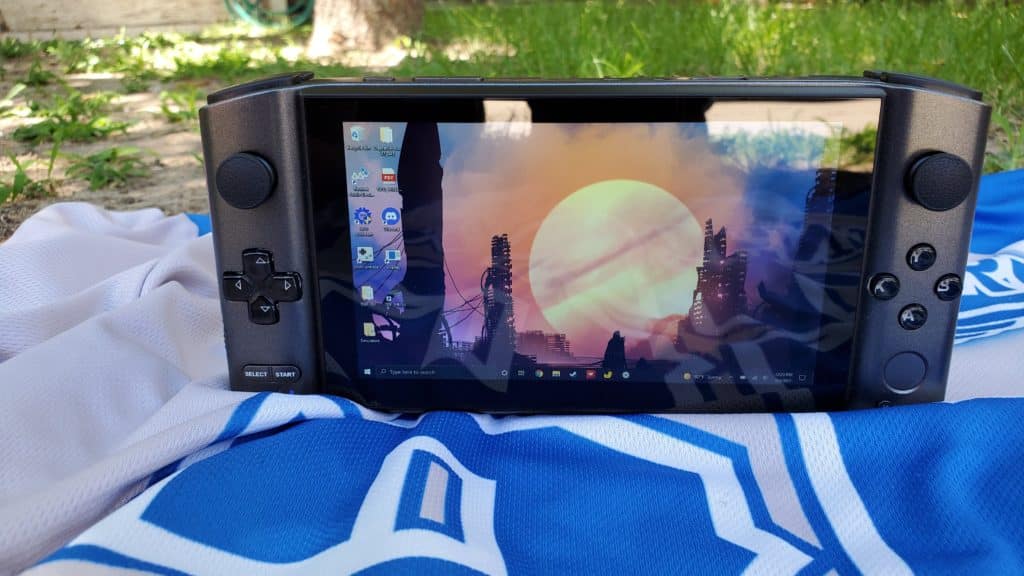
That’s a lot to take in, especially if you don’t know much about PC hardware. Its biggest benefit can also be a double-edged sword. This is a PC running a full Windows 10 OS. All the freedom this fact brings also introduces more complexity than any console. With how streamlined Windows is these days, it doesn’t take a rocket scientist to set up Steam or your storefront of choice, yet this is still a slight hurdle for the very casual audience expecting a beefed-up Nintendo Switch. Minus the CPU, both models of the GPD Win 3 contain the same specs. They feature 1TB of storage on an NVME drive, a Wifi 6 capable chip, 16 GB of LPDDR4x ram, Bluetooth 5.0, and a 5.5-inch 720x1280p touchscreen. On the outside, you’ll find a microSDXC card slot, a Thunderbolt 4 port on the bottom, and a single USB 3.2 port alongside an audio jack on the top of this device.
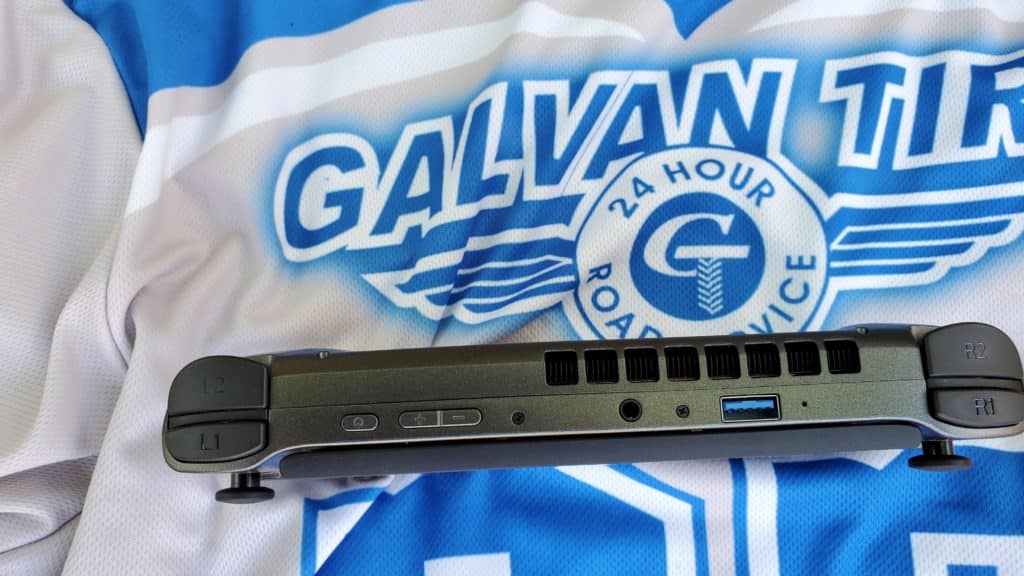
GPD has a long line of Ultra Mobile PC (UMPC) products. They range from wholly focused on productivity usage to mixing some gaming elements into it, like with the Max. The Win series of devices is mainly concentrated on the gaming side of things, more so with the Win 3. Its most noticeable aspects at a glance are the dual analog sticks, the d-pad & buttons, as well as the top triggers. There is no mistaking its purpose and it somehow manages to look incredibly stylish. This is the most eye-catching piece of tech that I own that absolutely emits a premium look. It only gets better looking as you slide up its mechanical screen to reveal the fully back-lit touch-based keyboard hiding underneath. This also marks the first GPD product to forego the Nintendo DS styled clam-shell form factor for a uniform body. With the screen being on the forefront of the device, you may want to slap on the included screen protector or get a carrying case to retain that premium image the Win 3 has.
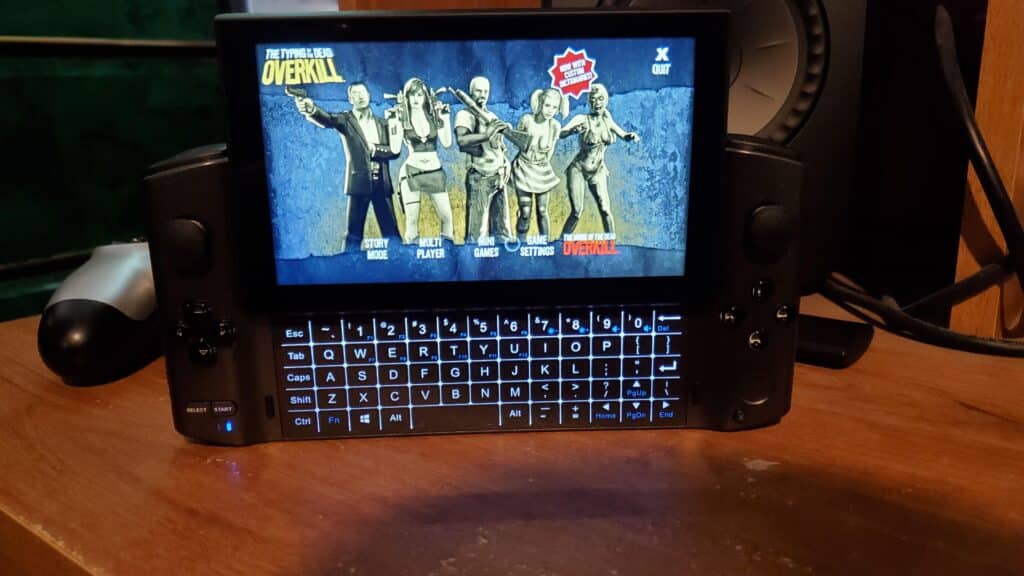
My geeking out over the aesthetics aside, let’s go into more detail with the controller inputs. Let’s start with the triggers, shall we? In a first for GPD, these triggers are analog. That means you can apply different amounts of pressure to fine-tune how much force you want behind the input. This is most noticeable when playing Racing games, as the old digital style triggers would mean you are either going full force on that acceleration or have your foot off the pedal. It was far from ideal. The triggers on the Win 3 go down smooth and give you far more control in certain types of games. If you’ve had a PS Vita in the past, you’ll likely find the face buttons to be familiar. From the size to their satisfying clickiness, they are precisely the same. I’ve always found them to be better than any handheld before or since. I’d go as far as to say these buttons are better than any default console controller too. They are fantastic for retro games and the fighting genre.
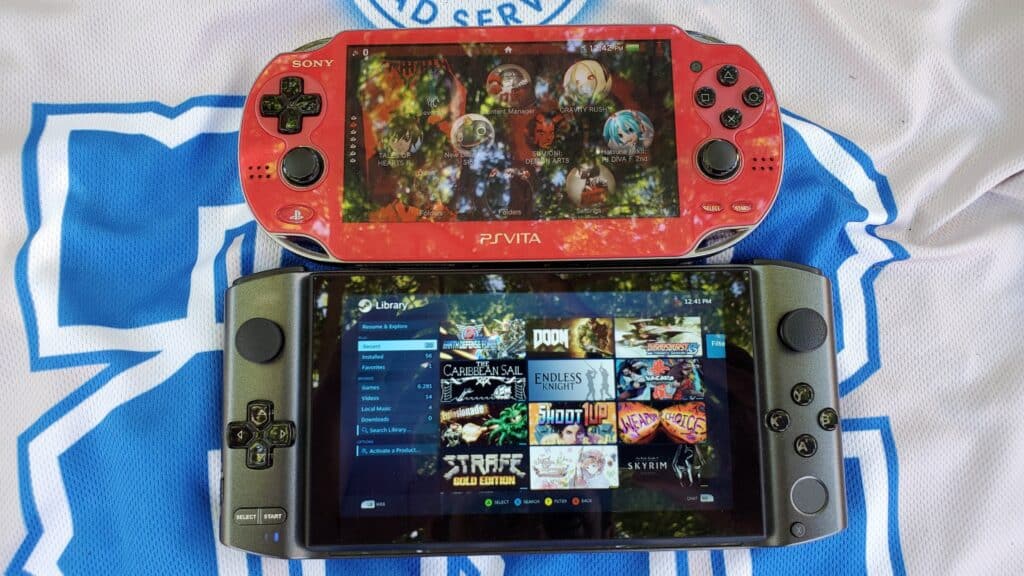
Finally, we have the dual analog sticks. Now, these are not as good as what you’d find on modern console controllers yet are by far the best GPD has produced so far. They have a decent range of travel and have a good amount of grip in their texture so that your thumbs don’t slip off. It also clicks down for the usual controller L3 & R3 buttons. I do have a concern with them, however. The thumbstick sleeves are tiny. Whenever you move them, you’ll see the innards of the sticks underneath. It is far too easy for junk and lint to get lodged in there if you aren’t careful. I have doubts about the longevity of these thumbsticks, and I expect they’d be the first thing to break down, not the sliding mechanism of the screen as most people tend to believe.
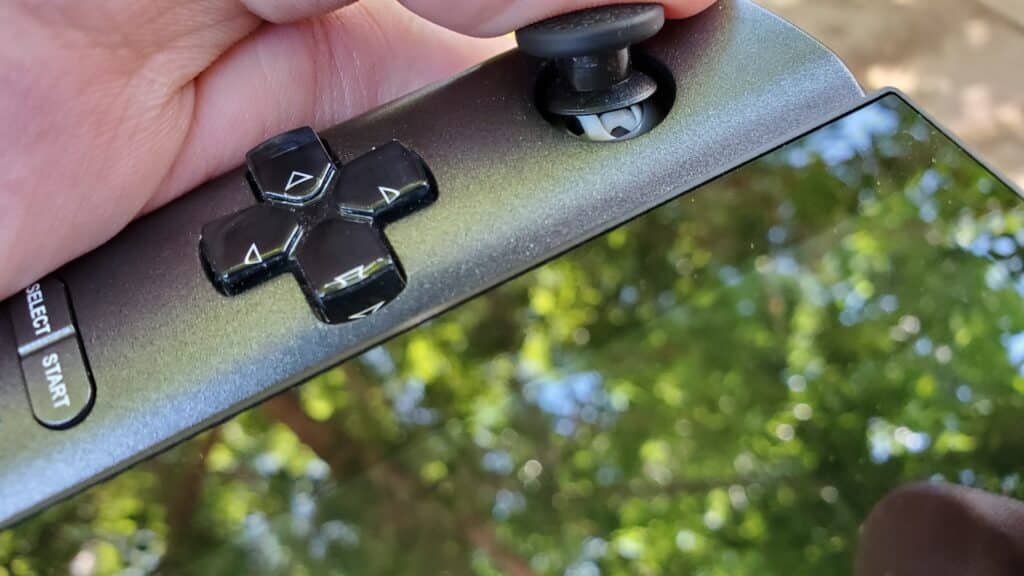
As for the other minor buttons, the Start and Select are on an easy-to-reach location on the bottom left. They are large and easy to tell apart. I’ve no complaints there. Then we have the tiny Xbox guide button tucked into the bottom right. It is placed so you won’t press it accidentally, yet still easy enough to reach. Now we have another first for GPD. A thumbprint scanner on the bottom right. It allows you to log into your Windows account without needing to slide up your screen to type in your password. That will save a lot of wear and tear on the screen mechanism, as well as being a nice quality of life improvement for the user. The volume buttons and power switch are found on the top of the device. Almost everything you need is in full reach without needing to slide up the screen. I’d have preferred the power button to be further from the volume, though. It is the easiest to reach in its current position, so I can easily see someone accidentally entering sleep mode while quickly reaching for the volume until they get used to it.
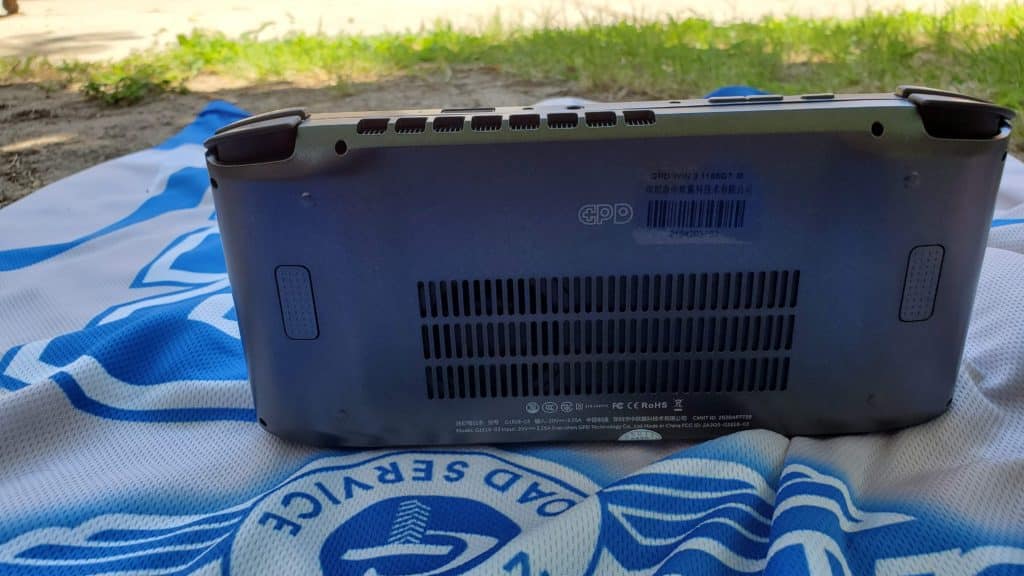
Flip the device around, and you’ll find two additional buttons. They are mapped to the Alt+F4 and the Ctrl+Alt+Delete functions. It lets you shut down any program by pressing it or bringing up the task manager. I believe it is meant to give you even less reason to slide up the screen to access your keyboard should you need those commands. They are difficult to reach, though I certainly don’t want the possibility to trigger them while gaming. Thankfully, with the included GPD software, you can rebind it to any key or macro. I set them both to the F12 key as a quick way to take screenshots which has proved extremely handy. You can set them as additional gamepad buttons, but due to their location, don’t expect to improve your gameplay by setting them as jump or reload as you would with premium console controllers that contain rear paddles. So yeah, you have a full range of buttons and features for anything you’d need while gaming. There is a massive flaw that immediately cripples the focus on playing video games, however. The ergonomics.
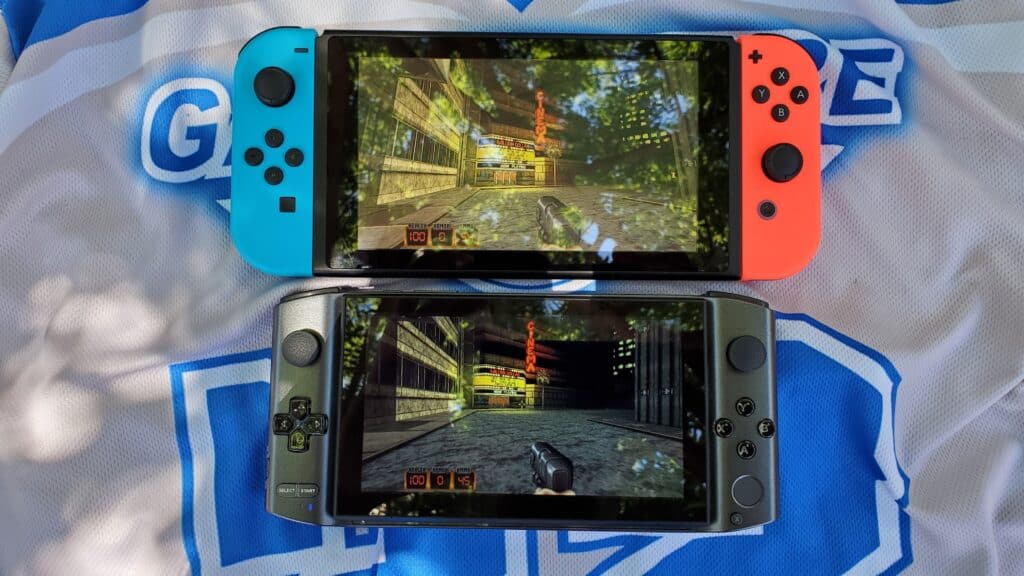
For racing games and shooters, it is mostly fine. The problem arises when you need to make use of the d-pad or face buttons. They are both perfectly vertical from the thumbsticks and found beneath them. It does not make it easy to reach. With how the Win 3’s body is shaped, your fingers naturally end up at the top of the device, and you really have to stretch your thumbs down to access the rest of the inputs. There are different methods you can try holding it in your hands, but none that I’ve found have made both the triggers and buttons easily accessible. The screen doesn’t sit flush with the rest of the body to add salt to the wound. It sticks up a good deal, and with how close the d-pad and buttons are, it will get in the way as you try to press those nearest to it. I have big hands and find it tolerable, but others that have tried this device have found it too awkward to use for long. This is kind of a deal-breaker as one can’t exactly try it out for themselves since this is such a niche product that a friend is unlikely to have one just lying around. As soon as I get sent the silicone grip GPD is making, I’ll link its review here, not that possibly needing to buy an accessory is a good thing for such a pricey product.
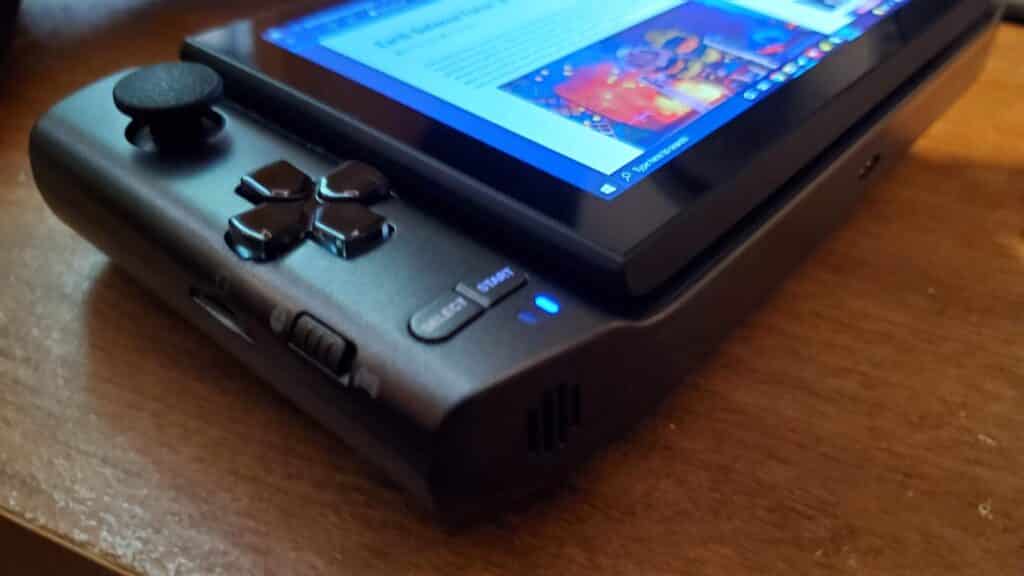
When first booting it up, you will have to go through the usual affair of logging in or creating a Microsoft account. You’ll then have to download Steam, emulators, or whatever you plan to use it for. Being a full-fledged PC, it can be used for plenty of things. The touch keyboard is acceptable for minor tweaks or typing in links, though too bothersome for more than that. Unless you want to carry around a separate keyboard, it is best to think of this as a gaming device while on the go. There is a dock that allows you to connect it to a monitor alongside all your other PC peripherals while at home, though that is a separate purchase that I do not own. I found it to be a hard sale due to the dock not making full use of the Thunderbolt 4 port of the Win 3. You can not connect an external GPU through it, and it is not how I plan to use the device in general. If I were, I’d just get a cheapo USB C adapter for the same functionality the dock offers. Just make sure it can provide enough volts to charge it as there is only one USB C port, and it’s the only way to recharge the battery.
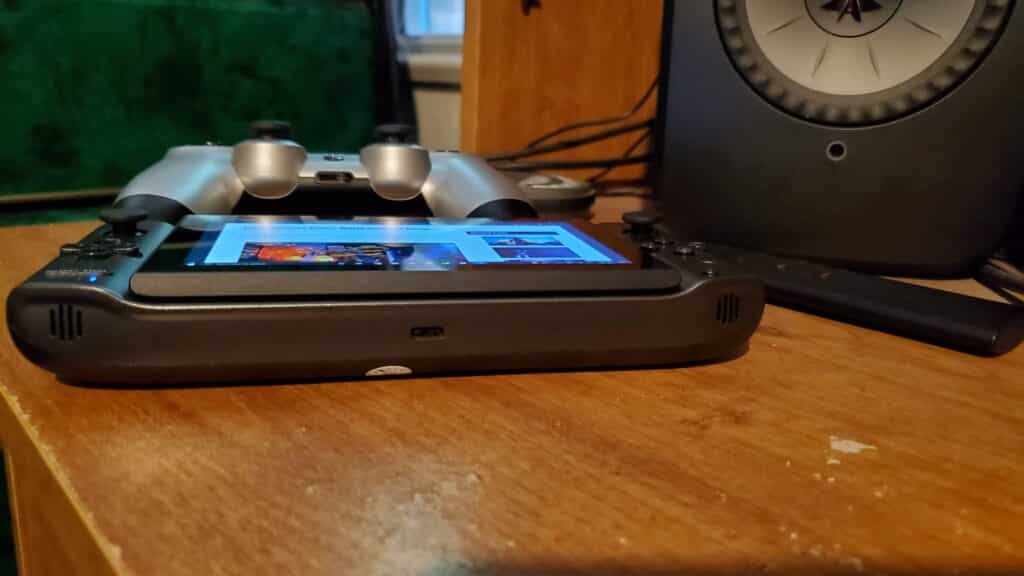
One thing you will quickly notice is that there is not much space in your OS. This is because GPD partitioned the 1TB SSD into two separate drives. Why they continue to do this is beyond me, and while it doesn’t do any harm, I still suggest deleting that second drive to have full access to the storage in one place. It over-complicates things for the average consumer to have to do that. I’d also like to note that all the marketing for the GPD Win 3 goes on about the speed of its RAM being clocked at 4222MHz. By default, it is clocked at just 3733MHz. You actually need to go into the BIOS by holding the FN and Del key while the device is booting up to change it to 4222MHz. I recommend you make sure your device is stable before doing that, as who knows why they choose to do this. I’ve changed the speed on mine after a few hours of using it, and after nearly two months of heavy usage, I haven’t had a problem. The speed of your RAM is pretty vital while gaming as an igpu doesn’t have any VRAM. It needs to stream in assets from your RAM sticks, so speed is paramount. 3733MHz is quite fast, but there is little to no reason to not bump that speed up if your device is stable.
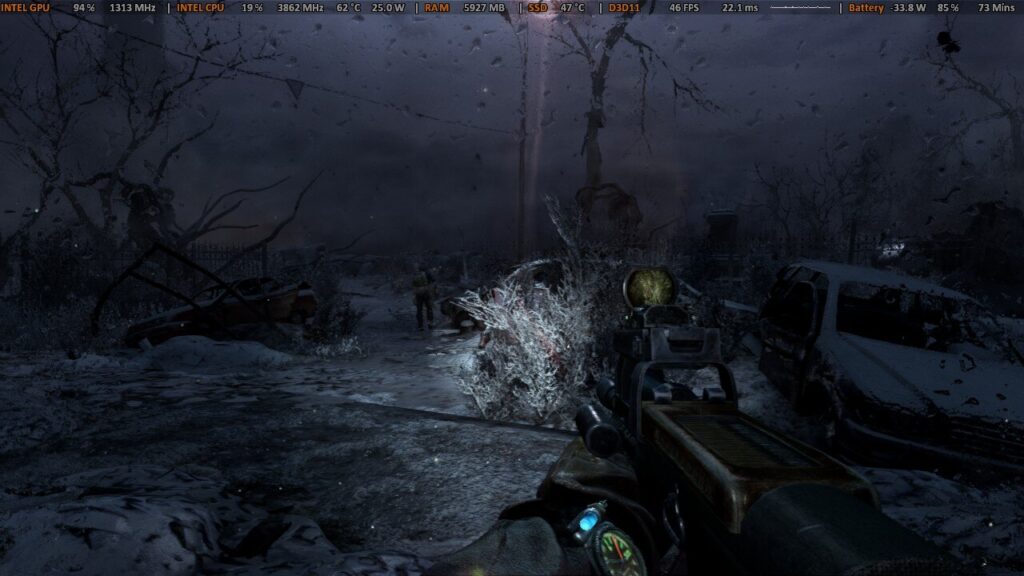
None of those tweaks from that last paragraph are truly necessary. If you have no idea what I was talking about, don’t worry too much about it. The chipset in the Win 3 is a far cry from the Atom and M3 processors of previous iterations. If I had to make an easy-to-understand comparison to its power, I’d say imagine a device somewhere in-between that of a PS4 and a PS4 Pro. Now imagine that device being just over a pound in weight and easily able to slip into your backpack/purse. Tweaking things like config files and making custom resolutions are a thing of the past. It can run just about any game you throw at it without much fuss. About the only thing you have to worry about is how long you want the battery to last, as playing on ultra settings and at 60fps will take much more power than using more modest settings. That is an example. I don’t mean to imply that all modern games will run at max settings. Nier Replica, for instance, ran at just over 30fps on the absolute lowest settings. It is a title that runs poorly on my main PC too, and is the exception of running inadequately on this device. The mere 720p resolution of this display allows the GPD Win 3 to pull amazing feats with other high-end games.
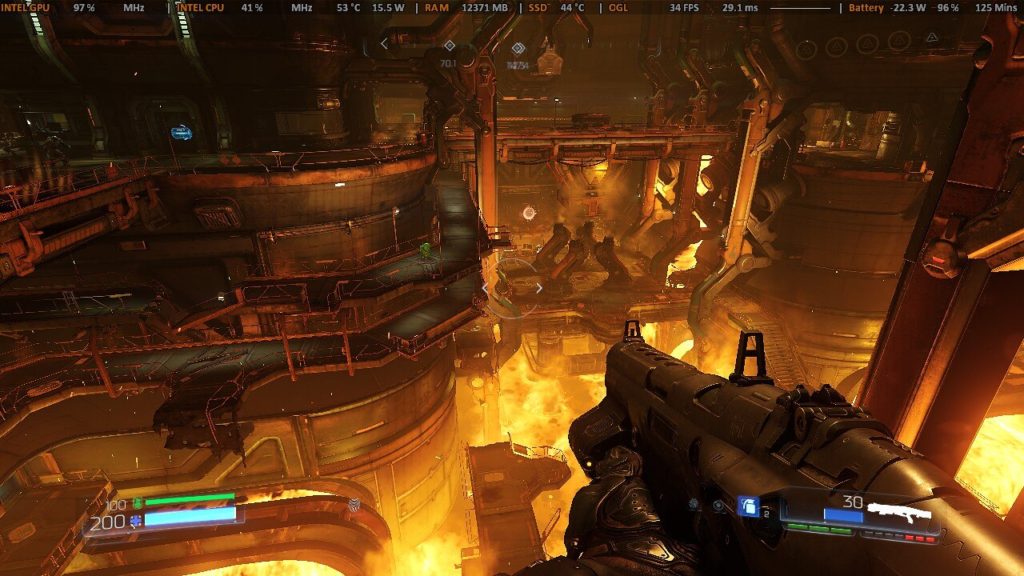
Testing this device was an unusual experience than what I am used to. My old as dirt self remembers back in the ancient year of 2017 me being impressed that I can run Left 4 Dead on the lowest settings at 640x480p while having a framerate in the low 20’s with the GPD Win 1. Fast forward to now, and that would seem like a bad joke with how powerful the Win 3 is. It ran near everything I threw it at, and the most problems I’ve had with performance was not reaching a stable 60fps and having to lower some settings. Fallout 4, Halo the Master Chief Collection, Doom 2016, and much more titles have been tested on my device. Intel’s Iris Xe integrated graphics is incredible, and the CPU side of this isn’t far behind. It ran everything gaming-related I threw at it that relies on CPU brunt, such as emulation. Ever wanted to play PS3 games on the go? This the machine for you. There is really a case to be made to get the dock accessory if you still have a 1080 monitor or TV and treating this device like a Nintendo Switch. It is powerful enough to run at that resolution, and you can really crank up how many watts you let the Win 3 use for a boost in performance to compensate.
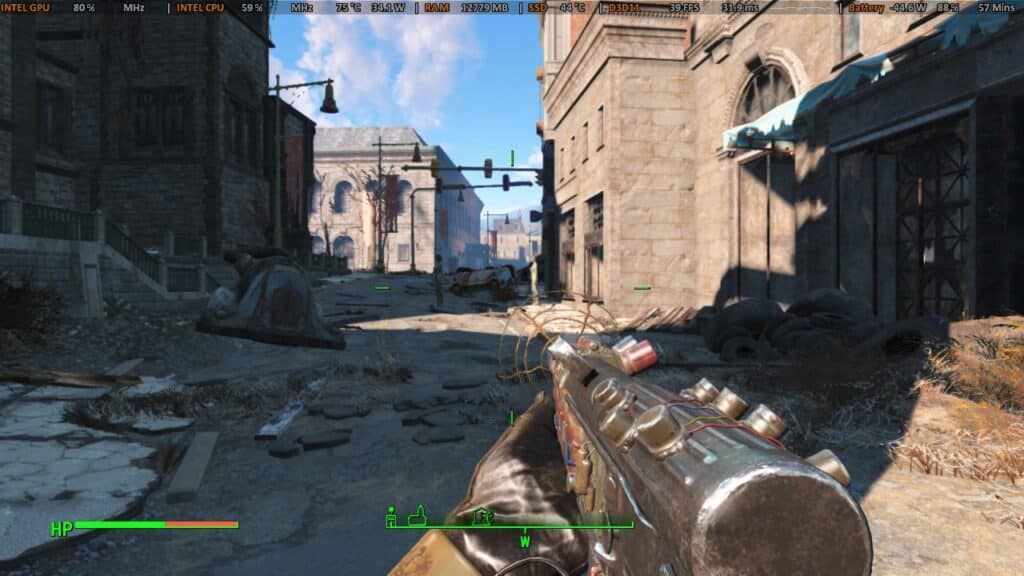
By default, 15-20 watt TDP will be assigned to the CPU (technically, it’s the SOC). The battery in the Win 3 is 46 watt-hours, meaning you’ll get around two hours of gameplay if you’re maxing that with hard-to-run games. There is another setting in the BIOs to increase performance and let it take 25-30 watts at a time. That will result in under an hour and a half of gameplay. What you select will determine the performance to battery life ratio you can expect if whatever you are doing even requires that much wattage at all times. The estimates I gave out are worst-case scenarios. I highly recommend downloading ‘Ciph Rays TDP bat file’ over on the GPD Discord. It allows you to set the TDP (Total Draw Power) without having to go into the BIOs and makes it easy to keep switching what to give to your CPU. You can also disable one of the four CPU cores so that more power goes to the other three and the igpu. That allows you to use less energy for more performance, depending on if the game in question was GPU bound, which is nearly always the case.

There is a sizable vent in the backside of the device to let air flow in, while the exhaust is located at the top and pointing away from you to expel hot air. I was pleasantly surprised with how well the single fan inside managed to cool the Win 3. Even when I went a bit extreme and stress tested it with my TDP to 35 watts while on battery, it kept the CPU under 80 degrees. Under normal conditions, it is much less than that and keeps it from ever throttling its performance. It can get loud with heavy loads and is quite noticeable if you’re in public, yet it keeps the device cool. Luckily for us, the speakers are surprisingly good. We can easily drown out any noise the fan may make with how loud the speakers can get. Better still is how there is very little distortion to the sound quality no matter how loud you set it. They have little in the way of low-end bass, and I wouldn’t opt to listen to music like this, but the speakers do their job shockingly well. It is placed on the bottom of the device and far enough away from the edge that you won’t cover them with your palms. This is an aspect of the GPD Win 3 that doesn’t get enough credit. The audio is louder and clearer than near any portable short of a high-end tablet.
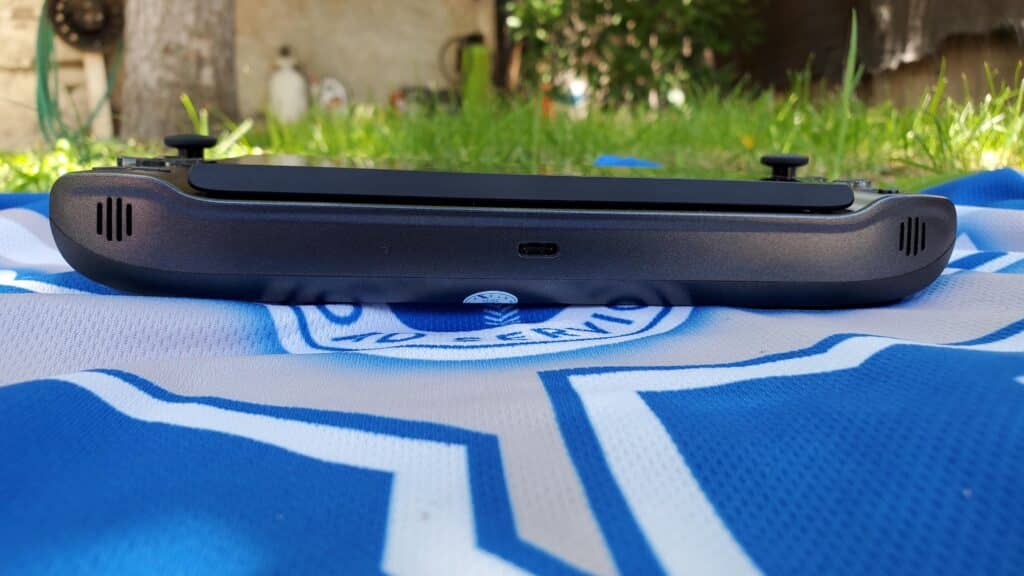
With a 5.5 inch screen, some may find it challenging to use it for its PC functionalities. While gaming, however, this leads to a pretty sharp image thanks to the small size of the display. If you’ve ever used a PS Vita, the screen size on that was five inches. The Win 3 is half an inch larger than that, though not quite as large as the 6.2 display on the Nintendo Switch. It is significantly wider and heavier than those consoles as well. Not to the point of being uncomfortable by any means, yet you will probably appreciate their lightness all the more once you pick them up again if you own one. The trade-off is obviously the raw power of the GPD Win 3 and the excellent cooling system to make sure its performance doesn’t skip a beat. It goes without saying when you take into account that the low-end model goes for $1000 and the I7 version goes for $1100 retail that it runs leaps and bounds over anything those handhelds can do. This is quite an investment, especially if you don’t have a pre-existing library of PC games. Titles on the PC are generally much cheaper. Yet, it is still a tough sale for those heavily invested in other consoles, mainly the Switch that competes directly on the portability aspect.
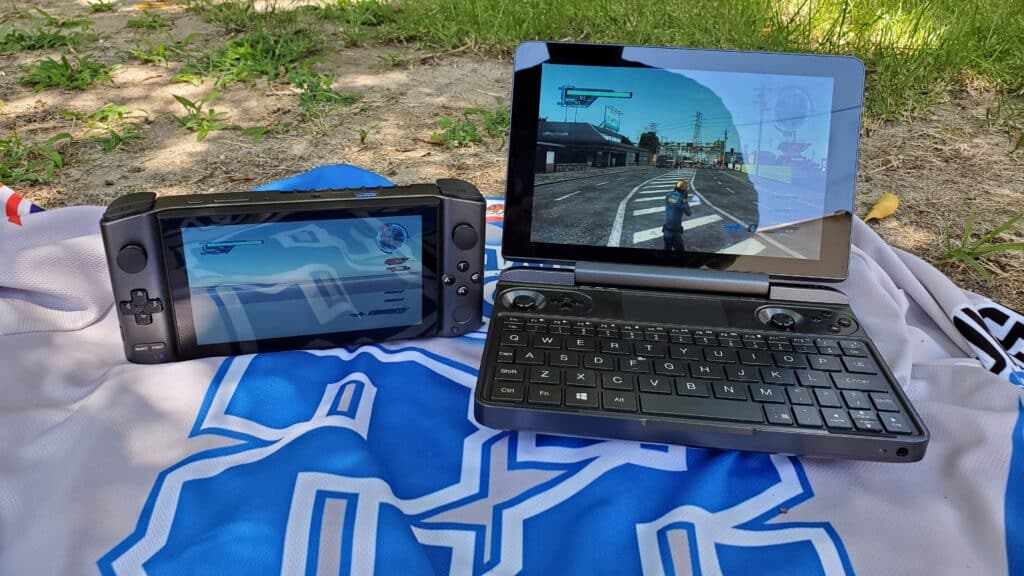
As a life-long PC gamer, the ability to play all my games on the go is an irresistible prospect. The Win 3 is powerful enough to make it kind of boring to test out titles. If the Intel drivers don’t bork the game, chances are that it runs perfectly fine. The only titles that I found to be flat-out unplayable are Persona 4 and Earth Defense Force 5. If you boot them up, the textures will freak out and are glitched to the point you can’t make anything out. In the case of Persona 4, this has been reported to Intel since the game launched on PC over a year ago. There is a reason you’ll hear many people call Intel drivers sub-par. Hopefully that changes now that they are launching dedicated GPUs, yet that is still to be seen. As impressive as their hardware is, especially their integrated graphics, there are legitimate reasons to consider AMD’s weaker for gaming chipsets on other PC handhelds such as the AYA Neo. Those are the only two titles tested that were unplayable. A few other games like Skater XL had weird textures on trees, but nothing to stop you from enjoying them. They were the outliers, and things ran perfectly fine for everything else. It was just quite unfortunate the exact two games I planned to play the most on the go were broken and have no fixes in sight.

I’ve yet to mention the mouse/gamepad toggle switch on the left side of the Win 3. Sliding this tab up will put it in mouse mode so that your analog sticks act like a mouse pointer and the triggers as mouse buttons. Sliding it down will set it to X-input mode and will make games see the controls as Xbox buttons. It is a seamless and handy way to switch between gaming or Windows navigation. With the included software, you can set what each button does when toggled to mouse mode. The touchscreen also proves quite handy to select things or scrolling through web pages. While on that topic, I’d like to mention how good the colors are on this display are. It’s no high-end tablet, but it isn’t the Nintendo Switch either. It does have a flaw in its viewing angles being bizarrely poor when looking at it from the bottom of the screen instead of straight on or above it. That doesn’t make it unplayable or anything, though you’ll be hard-pressed not to notice the color-shifting until you get a good angle.
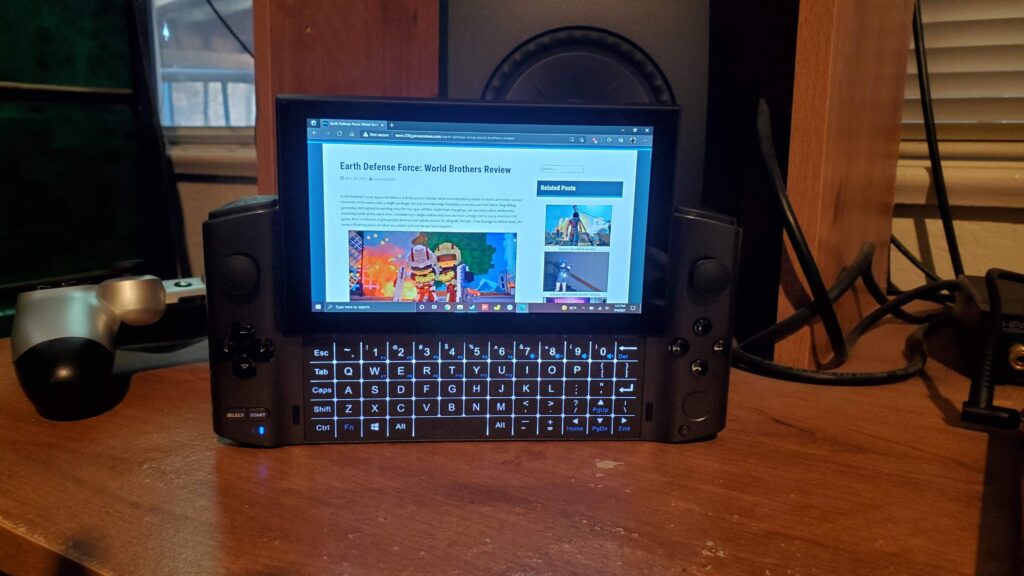
Inside of the GPD Win 3, there are two motors to simulate the rumble of a controller. It works well enough in most cases, but their movement is very audible. When they are activated, it reminds me of the sound my old Nokia cellphone made when it was vibrating on the table as I got a call. I honestly like how it feels in most cases, with a few exceptions. Games that use the gamepad’s motor to the max frequency feel terrible, and you can’t turn them off. If you are lucky, there is an in-game setting, but GPD provides no way to disable them. Charging a shot with the Plasma Pistol in Halo would have made me not use the gun at all if there wasn’t a way to disable vibration there. That is the only example I ran upon, but I’m sure there’s more out there, and chances are one of them will eventually lack the option to disable vibration. There is a firmware update by GPD to reduce the rumble strength by 20% if you want, though they would really benefit more in giving us the option to turn them off via their app. While they aren’t pleasant to the ears, I did enjoy them and think they are a net positive to one’s gaming experience. They are also necessary to have some form of feedback when typing on the Win 3’s touch-based keyboard. I shudder to imagine how using that would feel without them.
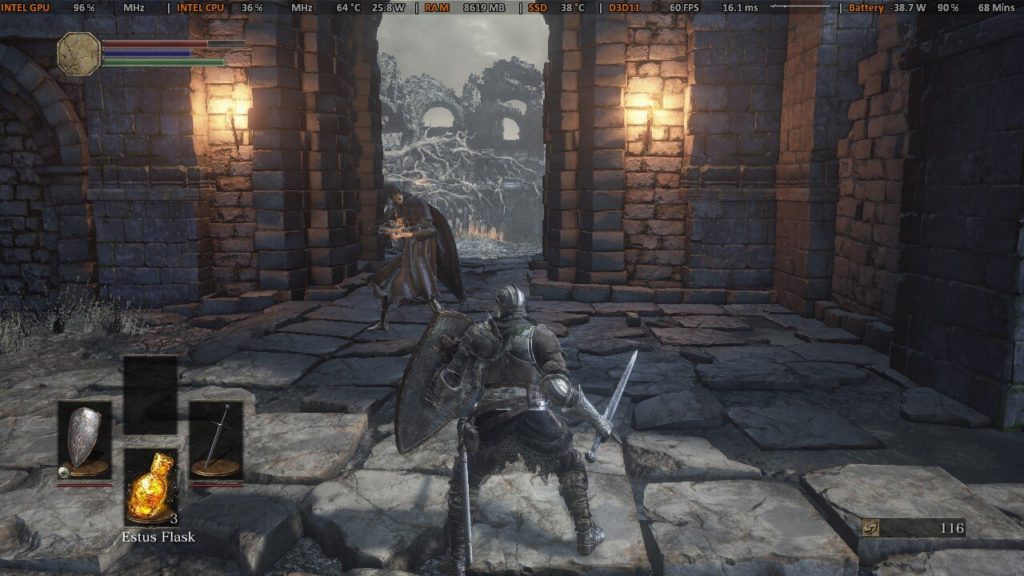
I’ve tested the Intel AX200 Wifi chip within it intensely using Google Stadia, Playstation Now, and other cloud gaming services. I also streamed my main PC to it. The Wifi 6 capability lead to me having very little latency and more than enough bandwidth overhead. Even if you don’t have a router capable of that, it is a great chip that isn’t prone to disconnections or instabilities. I certainly wouldn’t recommend spending a grand just to stream your games over the cloud when you can just buy a controller and clip to do that on your phone. It is just another option or way to use this device. Another good use is to wirelessly copy over game files from another PC to avoid downloading them again. Doing so saves you time and ISP bandwidth if you have a cap. One is more likely to be limited by your router’s speed than the AX200 chip when transferring things. You definitely are getting great quality internals for your hard-earned cash. From the cooling system to the RAM speed, this has premium parts to make the most out of the I5 or I7 CPU.

My intention wasn’t to make a documentary-length review, but the GPD Win 3 is just so darn interesting. Even with all its flaws, such as the ergonomics and noisy rumble motors, it is personally my favorite handheld since the PlayStation Vita. From the neat sliding mechanism to the sheer capability of the I5/I7, it has both the brunt to play near anything I throw at it and the experimental nature I love so much about these devices. That sure won’t be enough to justify the high cost to some, and while it is priced near what a similar spec laptop would cost, it lacks the on-the-go functionality those would have. This is a gaming device through and through, for better or worse. You have enough power to emulate up to PS3-era consoles and have access to the innumerable backlog of titles that the PC has. It is such a shame that with all these fantastic buttons, triggers, and thumbsticks, the bad ergonomics don’t make gaming a comfortable experience. They fumbled the most essential aspect quite hard for assumingly either the sake of the small form factor or stylish look. Just a bit of added curvature on the sides of the device and slanting the face buttons toward it would have gone a long way. As much as I personally like this device, it is hard to recommend it. I would say unless you really desire this small form factor and having rumble motors, you’d be better off waiting for the GPD Win Max 2021 update that features this same chipset.
- Acrolyte Demo - April 11, 2025
- Lostaris Demo - April 4, 2025
- El Panadero -The Baker- Review - August 27, 2024